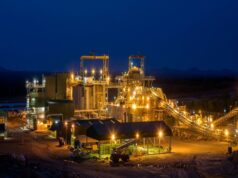On 21 July 2023, the multinational Glencore announced its production results for the first semester of 2023.
Gary Nagle, Glencore’s Chief Executive, said: “We are pleased to report a strong first semester production performance from our underlying base business, where our core copper, coal and zinc assets performed in line with expectations and previously communicated guidance”. Our production guidance for the full year remains unchanged from previous guidance. The weighting of copper, zinc and nickel volumes in the second semester reflects the increased production volumes expected from Collahuasi, Kazzinc, Mount Isa and INO.
Production highlights
Production highlights show that copper production was 488,000 tonnes, 22,200 tonnes (4%) lower than in the first semester of 2022. Own-source copper sales volumes were approximately 11,000 tonnes lower due to the timing of shipments.
Cobalt production of 21,700 tonnes was 1,000 tonnes (5%) higher than in H1 2022, reflecting improved recoveries at Katanga.
Zinc production of 434,700 tonnes was 46,000 tonnes (10%) lower than in S1 2022, mainly reflecting the divestments in 2022 of the South American zinc operations (18,700 tonnes) and the closure of Matagami (17,300 tonnes).
Own nickel production of 46,400 tonnes was 11,400 tonnes (20%) lower than in S1 2022, mainly reflecting the increase in INO’s third-party production (relative to own production), largely due to the strike at the Raglan mine in 2022.
At 717,000 tonnes, attributable ferrochrome production was 69,000 tonnes (9%) lower than in S1 2022, due to the additional days planned for the smelter shutdown.
Coal production of 54.2 million tonnes was broadly in line with S1 2022.
Production forecasts for the full year remain unchanged from those presented in Glencore’s Q1 2023 production report and December 2022 investor update.
Falling prices
As regards cobalt, given the recent oversupply of cobalt hydroxide throughout the sector, payabilities are down by around 25% at 30 June 2023 compared with 31 December 2022. This situation caused prices to fall to an all-time low of almost 50% in May 2023, before recovering to around 60% at the end of the first semester of the year.
Coal: The average Newcastle coal price (NEWC) for the first half of 2023 was 204.3 dollars/tonne. After applying a portfolio mix adjustment (a component of our regular coal cash flow modelling forecasts) of 43.6 dollars/tonne to reflect, for example, movements in non-NEWC coal prices, coking coal margins and the effect of JPU fixed price contracts, an average thermal equivalent realised price of around 160.7 dollars/tonne can be applied to all coal sales volumes.
Production forecasts are unchanged from those presented in Glencore’s Q1 2023 production report and December 2022 investor update.
Other key events
On 13 June, Glencore and its partner shareholders in Viterra Limited announced an agreement with Bunge Limited under which Bunge and Viterra would merge in a transaction. Under the terms of the agreement, Glencore will receive 1 billion dollars in cash and approximately 3.1 billion dollars in Bunge shares (at the date of announcement) for its approximate 50% interest in Viterra. The merger, subject to satisfaction of customary closing conditions, including regulatory approvals and Bunge shareholder approval, is expected to close in mid-2024.
On 16 June, Glencore sold its 100% shareholding in Cobar Management Pty Ltd (CMPL) to Metals Acquisition Corp (MAC), with Glencore continuing to purchase the copper concentrate produced from CMPL. In return, Glencore now owns 20.6% of MAC, which is accounted for using the equity method.
On 27 April, Glencore announced that it had agreed to acquire a 30% interest in Alunorte and a 45% interest in MRN from Hydro, with completion expected in the second semester of 2023.
Synthesis of #Mines_Actu_Burkina










